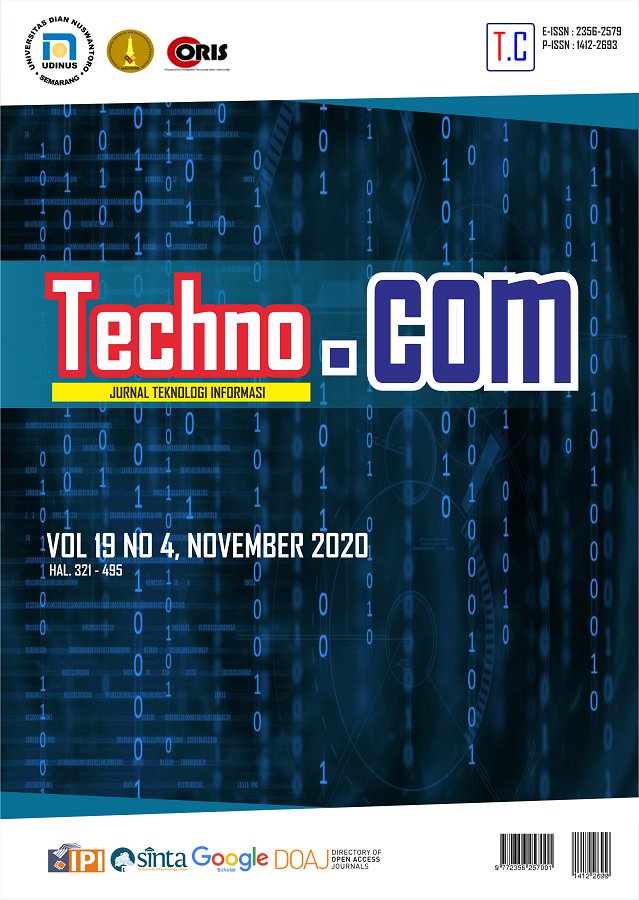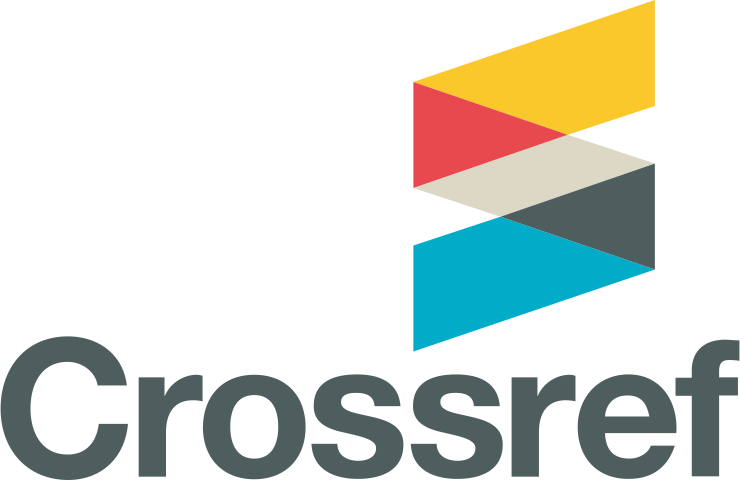Peningkatan Akurasi Pembobotan Attribute Importance Weights pada Deteksi Fraud
DOI:
https://doi.org/10.33633/tc.v19i4.3934Keywords:
Fraud Detection, Process Mining, Process Based Fraud, Modified Digital Logic, Multiple Linear RegressionAbstract
Kerugian miliaran dollar setiap tahunnya dialami oleh bank yang disebabkan oleh Fraud. Salah satu solusi untuk mengatasi kasus fraud yang dialami dunia perbankan dapat dilakukan dengan proses deteksi fraud. Pada proses deteksi Fraud, terdapat berbagai atribut PBF (Process Based Fraud) yang setiap atributnya memiliki dampak yang berbeda dalam mendeteksi fraud. Untuk menentukan bobot setiap atribut PBF digunakan metode MDL (Modified Digital Logic). Metode MDL menghasilkan attribute importance weights yang sesuai dengan dampak atribut PBF. Namun peran pakar masih sangat signifikan dalam menilai setiap attribute importance weights. Penelitian ini bertujuan untuk mengubah prosedur penentuan bobot attribute importance weights dalam metode MDL dengan menambahkan metode Multiple Linear Regression (MLR). Dengan mengganti inputan yang sebelumnya diberikan oleh pakar menjadi perbandingan bobot atribut secara otomatis. Kemudian hasil dari kedua metode dievaluasi menggunakan confusion matrix. Berdasarkan hasil eksperimen, metode MLR menunjukkan persentase klasifikasi menggunakan semua attribute importance weights menunjukkan hasil yang lebih baik dengan akurasi sebesar 99,5%.References
N. Mahyavanshi, “A Novel Idea for Credit Card Fraud Detection using Decision Tree A Novel Idea for Credit Card Fraud Detection using Decision Tree,” Int. J. Comput. Appl., no. September, 2017.
E. Kim, J. Lee, H. Shin, H. Yang, S. Cho, S. Nam, Y. Song, J. Yoon, and J. Kim, “Champion-challenger analysis for credit card fraud detection : Hybrid ensemble and deep learning,” Expert Syst. Appl., vol. 128, pp. 214–224, 2019.
J. O. Awoyemi and S. A. Oluwadare, “Credit card fraud detection using Machine Learning Techniques : A Comparative Analysis,” Int. Conf. Comput. Netw. Informatics, 2017.
N. Balasupramanian, B. G. Ephrem, and I. S. Al-barwani, “User Pattern Based Online Fraud Detection and Prevention using Big Data Analytics and Self Organizing Maps,” 2017 Int. Conf. Intell. Comput. Instrum. Control Technol., pp. 691–694, 2017.
J. Zhao, R. Y. K. Lau, W. Zhang, K. Zhang, X. Chen, and D. Tang, “Extracting and reasoning about implicit behavioral evidences for detecting fraudulent online transactions in e-Commerce,” Decis. Support Syst., 2016.
V. Bhusari, “Study of Hidden Markov Model in Credit Card Fraudulent Detection,” 2016 World Conf. Futur. Trends Res. Innov. Soc. Welf. (Startup Conclave), vol. 20, no. 5, pp. 33–36, 2016.
R. Sarno, R. D. Dewandono, T. Ahmad, and M. F. Naufal, “Hybrid Association Rule Learning and Process Mining for Fraud Detection,” no. April, 2015.
L. Patrima and K. Zeitouni, “Automatic Learning of Predictive CEP Rules : Bridging the Gap between Data Mining and Complex Event Processing,” Proc. 11th ACM Int. Conf. Distrib. Event-based Syst., 2017.
S. Huda, R. Sarno, and T. Ahmad, “Fuzzy MADM Approach for Rating of Process-Based Fraud,” vol. 9, no. 2, pp. 111–128, 2015.
F. S. Mohammad Ali Beheshtinia, “Prioritize the renewable-power plants using a combination of Modified Digital Logic and fuzzy VIKOR methods,” Energy Eng. Manag., 2017.
M. Proti?, F. Fathurrahman, and M. Raos, “Modelling Energy Consumption of the Republic of Serbia using Linear Regression and Artificial Neural Network Technique,” vol. 3651, pp. 135–141, 2019.
S. Huda, T. Ahmad, R. Sarno, and H. A. Santoso, “Identification of process-based fraud patterns in credit application,” 2014 2nd Int. Conf. Inf. Commun. Technol. ICoICT 2014, pp. 84–89, 2014.
M. and G. G. Clausel, “Practical Session: Multiple Linear Regression,” vol. 66, no. 2014, pp. 73–75, 2015.
J. Wang, F. Wang, Y. Liu, J. Xu, H. Lin, B. Jia, W. Zuo, Y. Jiang, L. Hu, and F. Lin, “Multiple Linear Regression and Artificial Neural Network to Predict Blood Glucose in Overweight Patients,” Exp. Clin. Endocrinol. Diabetes, pp. 34–38, 2016.
S. Vats, G. Vats, R. Vaish, and V. Kumar, “Selection of optimal electronic toll collection system for India : A subjective-fuzzy decision making approach,” vol. 21, pp. 444–452, 2014.
N. Ogunbiyi and A. Basukoski, “A Context-Aware Process Mining Predictive Model,” pp. 1–9.
Downloads
Published
Issue
Section
License
Copyright (c) 2020 Erba Lutfina

This work is licensed under a Creative Commons Attribution-NonCommercial 4.0 International License.
License Terms
All articles published in Techno.COM Journal are licensed under the Creative Commons Attribution-NonCommercial 4.0 International (CC BY-NC 4.0). This means:
1. Attribution
Readers and users are free to:
-
Share – Copy and redistribute the material in any medium or format.
-
Adapt – Remix, transform, and build upon the material.
As long as proper credit is given to the original work by citing the author(s) and the journal.
2. Non-Commercial Use
-
The material cannot be used for commercial purposes.
-
Commercial use includes selling the content, using it in commercial advertising, or integrating it into products/services for profit.
3. Rights of Authors
-
Authors retain copyright and grant Techno.COM Journal the right to publish the article.
-
Authors can distribute their work (e.g., in institutional repositories or personal websites) with proper acknowledgment of the journal.
4. No Additional Restrictions
-
The journal cannot apply legal terms or technological measures that restrict others from using the material in ways allowed by the license.
5. Disclaimer
-
The journal is not responsible for how the published content is used by third parties.
-
The opinions expressed in the articles are solely those of the authors.
For more details, visit the Creative Commons License Page:
? https://creativecommons.org/licenses/by-nc/4.0/












